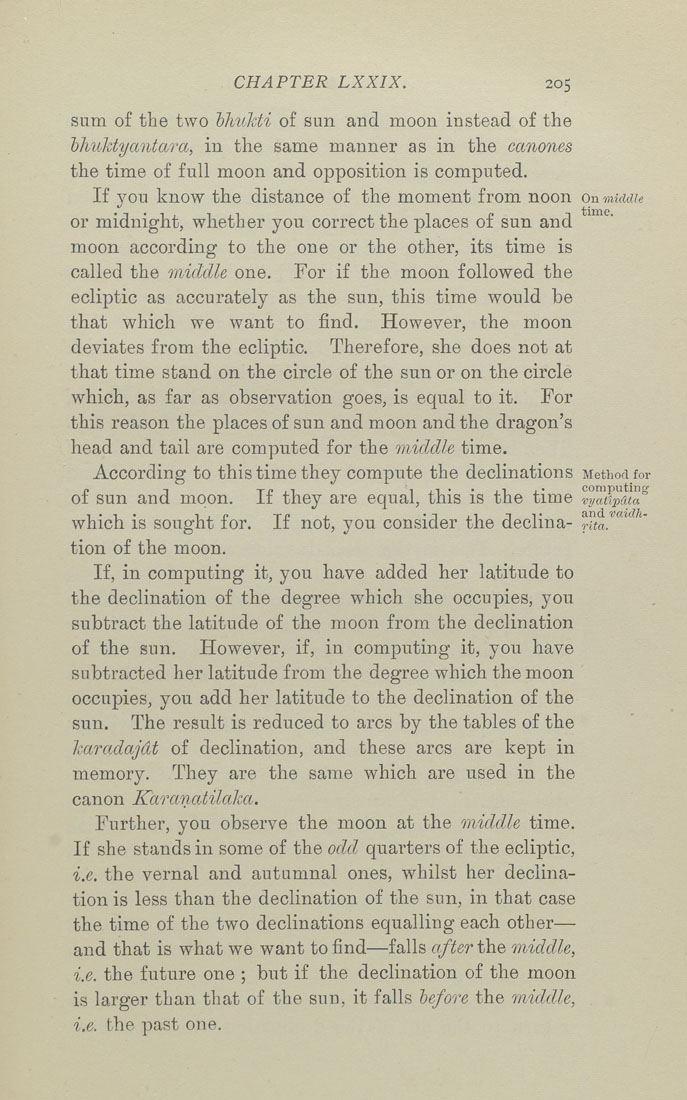CHAPTER LXXIX. 205
sum of the two bhukti of sun and moon instead of the
bhuktyctntara, in the same manner as in the cctnones
the time of full moon and opposition is computed.
If you know the distance of the moment from noon on middle
or midnight, whether you correct the places of sun and
moon according to the one or the other, its time is
called the middle one. For if the moon followed the
ecliptic as accurately as the sun, this time would be
that which we want to find. However, the moon
deviates from the ecliptic. Therefore, she does not at
that time stand on the circle of the sun or on the circle
which, as far as observation goes, is equal to it. For
this reason the places of sun and moon and the dragon's
head and tail are computed for the middle time.
According to this time they compute the declinations Method for
of sun and moon. If they are equal, this is the time mj^tupdfa^
T • T • iif> Tf J • -\ ii IT and vaidh-
which IS sought tor. It not, you consider the declina- rita.
tion of the moon.
If, in computing it, you have added her latitude to
the declination of the degree which she occupies, you
subtract the latitude of the moon from the declination
of the sun. However, if, in computing it, you have
subtracted her latitude from the degree which the moon
occupies, you add her latitude to the declination of the
sun. The result is reduced to arcs by the tables of the
karctdajdt of declination, and these arcs are kept in
memory. They are the same which are used in the
canon Kctrancttilctkct.
Further, you observe the moon at the middle time.
If she stands in some of the odtl quarters of the ecliptic,
i.e. the vernal and autumnal ones, whilst her declina¬
tion is less than the declination of the sun, in that case
the time of the two declinations equalling each other—
and that is what we want to find—falls ctfter the middle,
i.e. the future one ; but if the declination of the moon
is larger than that of the sun, it falls before the middle,
i.e. the past one.
|








